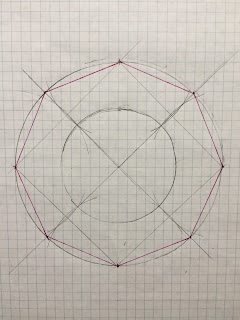The Vogue cape pattern ( 8959 ) is on sale, so I purchased it today. I'm thinking of making it w/o the collar, just facing at the neck edge. Based on the line drawing on the pattern envelope, here's one way to recreate a version of my school's PhD robe: This model (a version of view C) would omit the collar from the pattern, add a decorative black velvet yoke and trim on front and around neck, and shorten about 6". Instead of chevrons on gown sleeves, I would sew the ends of velvet strips into the seams of the side panels of the cape. I would put three buttons (as on view A), one of which will anchor the hood. Adding velvet strips down the front will help serve as a counterweight to the hood (augmented perhaps by inner mini pockets behind band to slip in weights). Here's how it would look in the rear, with an Aberdeen-style full hood trimmed in PhD blue velvet. Here is the front again, showing the hood. Earlier tho...






